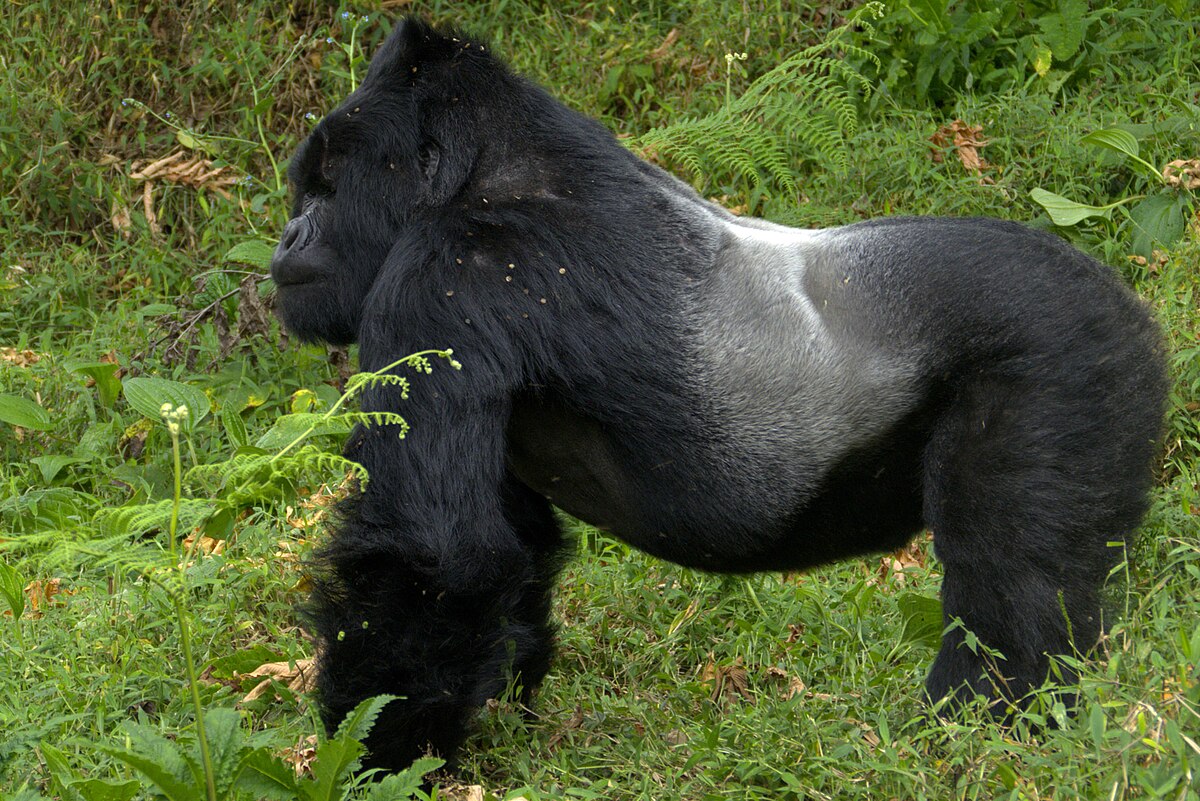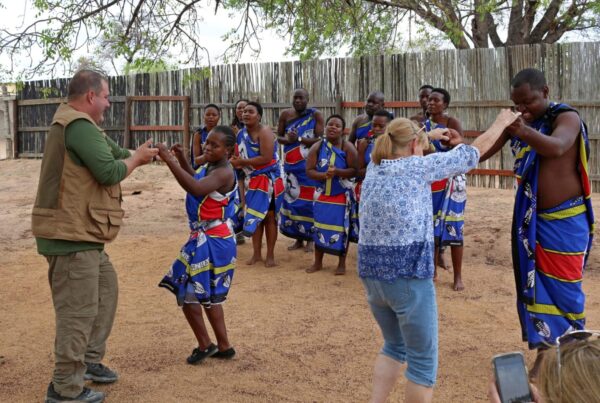Eastern Gorilla: Giants of Africa’s Forests
Witnessing the Majesty of the Eastern Gorilla
In the dense forests of Central Africa, where sunlight filters through thick canopies and mist clings to rugged slopes, a majestic primate silently navigates its territory, commanding awe and respect. The Eastern Gorilla (Gorilla beringei) embodies the wildness, intelligence, and vulnerability of the continent’s ecosystems, representing one of the most iconic species of African wildlife. Revered for its imposing physical presence and intricate social structure, the Eastern Gorilla has become a symbol of both the richness and fragility of the natural world.
Despite its strength and dominance in the forest, the Eastern Gorilla faces unprecedented challenges. Habitat destruction, poaching, and disease have caused population declines that demand immediate attention from conservationists, governments, and global communities. Understanding the biology, behavior, and ecology of the Eastern Gorilla is therefore essential, not only to appreciate its extraordinary nature but also to secure its survival for future generations.
Taxonomy and Subspecies
The Eastern Gorilla belongs to the genus Gorilla, which is divided into two species: the Western Gorilla (Gorilla gorilla) and the Eastern Gorilla (Gorilla beringei). Within the Eastern species, two subspecies are recognized: the Mountain Gorilla (Gorilla beringei beringei) and the Eastern Lowland Gorilla, also known as Grauer’s Gorilla (Gorilla beringei graueri).
Taxonomic classification reflects significant differences in habitat preference, physical characteristics, and behavior. Mountain Gorillas inhabit high-altitude forests of Rwanda, Uganda, and the Democratic Republic of Congo, whereas Eastern Lowland Gorillas occupy the lowland and mid-altitude forests of the DRC. Morphologically, Eastern Gorillas are larger than their Western counterparts, exhibiting a robust build, pronounced sagittal crests, and powerful musculature. Their genetic makeup highlights evolutionary adaptations to diverse ecological niches, yet both subspecies share remarkable intelligence, complex social structures, and emotional depth.
Physical Characteristics
The physical appearance of the Eastern Gorilla is striking, with a combination of size, strength, and grace that sets it apart from other primates. Adult males, known as silverbacks due to the silvery hair that develops along their backs with age, can weigh between 160 to 220 kilograms and reach heights of 1.7 to 1.85 meters when standing upright. Females are smaller, averaging around 90 to 100 kilograms, but possess agility and endurance that are essential for navigating dense forests.
The gorilla’s facial features are highly expressive, with deep-set eyes, broad noses, and prominent brow ridges. These features, coupled with subtle gestures and vocalizations, communicate a spectrum of emotions and intentions. The dense fur, generally black or dark brown, offers protection against cold temperatures at higher elevations and provides camouflage within the forest undergrowth. The muscular arms, which exceed the length of the legs, facilitate knuckle-walking and climbing, while the large hands and opposable thumbs enable precise manipulation of objects and vegetation.
Habitat and Geographic Distribution
Eastern Gorillas are native to the forests of Central Africa, with their distribution largely concentrated in Rwanda, Uganda, and the Democratic Republic of Congo. The Mountain Gorilla is found in high-altitude volcanic forests, such as Volcanoes National Park in Rwanda and Bwindi Impenetrable National Park in Uganda. The Eastern Lowland Gorilla inhabits lowland and montane forests within the DRC, including Kahuzi-Biéga National Park, Maiko National Park, and surrounding unprotected areas.
These forests are characterized by high rainfall, humidity, and a dense understory, creating an environment that sustains a diverse range of flora and fauna. Bamboo thickets, montane grasslands, and swampy areas provide both food and shelter, enabling gorillas to survive in challenging terrains. Seasonal changes influence food availability, prompting gorillas to adapt their diet and ranging patterns throughout the year. Despite the richness of their habitat, Eastern Gorillas face increasing fragmentation due to human activities, which isolates populations and threatens their long-term survival.
Social Structure and Behavior
The social organization of Eastern Gorillas is intricate and hierarchical. Troops are typically led by a dominant silverback, who exercises authority over group members, mediates conflicts, and ensures the protection of the family unit. A troop usually comprises several adult females, their offspring, and occasionally subordinate males who have yet to establish their own territories.
Behavioral patterns are complex and demonstrate intelligence and adaptability. Grooming serves as both a hygienic activity and a social tool, strengthening bonds and reducing tension. Play among juveniles is observed frequently, fostering cognitive development and social skills. Vocalizations, such as grunts, roars, and chest-beating, communicate emotional states, warnings, and intentions, while facial expressions and gestures convey nuanced social messages. Feeding behavior is dominated by herbivorous diets, supplemented occasionally with insects and other small animals. Tool use, observed in certain populations, highlights problem-solving abilities and environmental adaptation.
Diet and Feeding Habits
The diet of the Eastern Gorilla is highly diverse and seasonally variable, reflecting the availability of vegetation in their habitat. Mountain Gorillas rely heavily on leaves, stems, and shoots, with occasional consumption of fruits when available. Eastern Lowland Gorillas demonstrate a broader dietary range, incorporating leaves, fruits, seeds, bark, and bamboo shoots. Nutritional needs are met through continuous foraging, with individuals consuming up to 20 kilograms of vegetation per day.
Feeding behavior is complemented by sophisticated nest-building practices, where gorillas construct sleeping platforms using leaves and branches. Ground nests are common among Eastern Lowland Gorillas, while Mountain Gorillas often utilize elevated nests in areas where dense vegetation allows. These practices not only provide comfort and protection but also reflect learned behaviors transmitted through social interactions and observation.
Reproduction and Life Cycle
Reproduction in Eastern Gorillas is closely tied to social hierarchy and troop dynamics. Female gorillas typically reach sexual maturity between eight and ten years, while males mature later, attaining full silverback status after 12 years or more. Mating is usually monopolized by the dominant silverback, ensuring the propagation of his genetic lineage and maintaining social cohesion within the troop.
Gestation lasts approximately 8.5 months, culminating in the birth of a single infant. Twins are rare and present significant survival challenges. Infants remain dependent on maternal care for several years, gradually learning foraging skills, social behaviors, and environmental navigation. The developmental trajectory of Eastern Gorillas emphasizes social learning, with juveniles acquiring knowledge essential for survival and eventual leadership within their own troops. Lifespan in the wild averages 35 to 40 years, although external pressures, including poaching and disease, often reduce longevity.
Communication and Intelligence
The cognitive abilities of Eastern Gorillas are remarkable, with intelligence reflected in their communication methods, social strategies, and problem-solving skills. Vocalizations are diverse, including grunts, hoots, and chest-beats, each serving a distinct purpose such as signaling danger, asserting dominance, or expressing contentment. Gestures, facial expressions, and body postures complement vocal communication, conveying complex messages within the troop.
Tool use, although less frequent than in chimpanzees, has been observed, including the manipulation of sticks to test water depth, strip leaves for nests, or access otherwise unreachable food sources. Observations of memory, empathy, and social learning underscore the gorilla’s capacity for nuanced behavior and adaptive intelligence. These traits reflect a high degree of sentience and reinforce the ethical imperative to protect and study these primates.
Conservation Status and Threats
The Eastern Gorilla is classified as Critically Endangered by the International Union for Conservation of Nature (IUCN), with fewer than 5,000 individuals remaining in the wild. Population declines have been driven primarily by poaching, habitat destruction, and disease. The bushmeat trade and illegal wildlife trafficking continue to threaten survival, while deforestation for agriculture, mining, and logging fragments habitats and isolates populations.
Political instability, particularly in the Democratic Republic of Congo, further complicates conservation efforts, limiting access to remote habitats and impeding enforcement of protective measures. Infectious diseases, including respiratory illnesses transmitted from humans, pose additional risks, especially in regions where human interaction is unavoidable.
Conservation initiatives have been implemented to safeguard Eastern Gorillas, including the establishment of national parks, anti-poaching patrols, habitat restoration projects, and community engagement programs. Ecotourism has emerged as a vital conservation tool, providing both economic incentives and global awareness. By promoting responsible visitation and emphasizing education, ecotourism reinforces the value of preserving these remarkable primates and their habitats.
Ecological Importance
The Eastern Gorilla plays a crucial role as a keystone species, influencing forest ecology and maintaining biodiversity. Seed dispersal through foraging behavior promotes plant regeneration and forest growth, while fallen vegetation creates microhabitats for other species. By shaping vegetation patterns and supporting ecological interactions, Eastern Gorillas contribute significantly to the integrity of their ecosystems.
Their presence indicates the health of the forest, with declining populations signaling environmental stress and degradation. Protecting Eastern Gorillas thus benefits broader ecological networks, supporting countless other species and sustaining the delicate balance of tropical forests.
Human Interaction and Cultural Relevance
Local communities have shared a multifaceted relationship with Eastern Gorillas, ranging from spiritual reverence to conflict over resources. In some cultures, gorillas are considered sacred and symbolic of strength, intelligence, and resilience. Traditional knowledge about gorilla behavior has informed conservation strategies, providing insights into habitat use, feeding patterns, and social dynamics.
Tourism has transformed human interaction with Eastern Gorillas, offering opportunities for education, cultural exchange, and economic empowerment. Gorilla trekking experiences, when managed responsibly, allow visitors to witness the species in its natural habitat while generating funds for conservation and local communities. These interactions underscore the importance of balancing human presence with the well-being of wildlife, promoting sustainable engagement rather than exploitation.
The Future of the Eastern Gorilla
The future of the Eastern Gorilla hinges upon continued conservation efforts, scientific research, and international collaboration. Strategies must address habitat preservation, anti-poaching enforcement, disease prevention, and community involvement. Innovative approaches, such as habitat corridors, wildlife monitoring technologies, and education programs, are increasingly vital to ensure long-term survival.
Global awareness and funding support remain essential. As ambassadors of forest health and ecological integrity, Eastern Gorillas command attention, reminding humanity of the consequences of neglect and the potential for positive action. Their plight reflects broader environmental challenges, urging a commitment to sustainable stewardship of Africa’s natural heritage.
Experiencing Eastern Gorillas in the Wild
Observing Eastern Gorillas in their natural habitat offers an unparalleled wildlife experience. Guided tours and treks provide insight into the species’ complex social interactions, feeding behavior, and ecological role. The experience of witnessing a silverback leading his troop, juveniles engaging in play, and families navigating the forest leaves a lasting impression, inspiring respect and advocacy for conservation.
Strict guidelines are followed to minimize stress and disease transmission, ensuring that human presence supports rather than endangers gorilla populations. By participating in responsible wildlife tourism, visitors contribute to conservation efforts while deepening their understanding of one of Africa’s most extraordinary creatures.
Conclusion
The Eastern Gorilla represents strength, intelligence, and ecological significance within the forests of Central Africa. Its survival is intimately linked to the preservation of habitat, responsible human engagement, and sustained conservation efforts. The species serves as both a symbol and a steward of Africa’s rich biodiversity, highlighting the need for global awareness and protective action.
For travelers seeking to experience the Eastern Gorilla firsthand, engaging in guided tours and safaris provides an unforgettable encounter with these remarkable primates. By choosing reputable providers such as WildHorn Africa, visitors not only witness the awe-inspiring presence of Eastern Gorillas but also contribute meaningfully to their preservation. An extraordinary journey into Africa’s forests awaits, where each interaction with the Eastern Gorilla reinforces the beauty, intelligence, and fragility of the natural world.





 WildHorn Africa – Authentic and unforgettable tours across Africa, guided by local experts who know the land, wildlife, and culture best.
WildHorn Africa – Authentic and unforgettable tours across Africa, guided by local experts who know the land, wildlife, and culture best.


